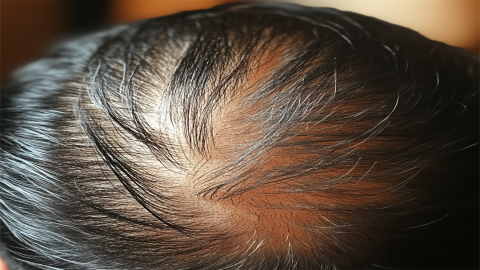Can mulberry leaves treat baldness?
Baldness generally refers to androgenetic alopecia, and mulberry leaves usually cannot treat androgenetic alopecia. If discomfort symptoms occur, it is recommended to seek medical attention promptly, clarify the condition, and follow medical advice for treatment to avoid delaying the disease progression.

Androgenetic alopecia is mainly caused by genetic factors, changes in androgen levels, and increased sensitivity of hair follicles to these hormones. Mulberry leaves do not have a direct therapeutic effect on baldness caused by these factors. Effective treatments for androgenetic alopecia include pharmacological treatments, such as finasteride and minoxidil, as well as hair transplantation surgery.
In daily life, patients should maintain a healthy diet, consuming more foods rich in protein, vitamins, and minerals, such as fresh vegetables, fruits, nuts, and fish, to provide adequate nutrition for hair growth. Physical therapies, such as low-level laser therapy and photodynamic therapy, can stimulate hair follicles, enhance follicular activity, and promote hair growth. Hair transplantation surgery involves extracting healthy hair follicles from dense areas, such as the occipital region, and transplanting them to the balding areas to achieve therapeutic effects.
Mulberry leaves themselves do not possess direct therapeutic capability for androgenetic alopecia, but as part of routine scalp care alongside professional treatment, they may help improve the scalp environment and indirectly promote hair growth.
References:
[1] Zhou Cheng, Fan Weixin, Fang Hong, et al. Chinese Guidelines for Diagnosis and Treatment of Androgenetic Alopecia (2023)[J]. Journal of Clinical Dermatology, 2024, 53(12): 752-758.
[2] Zhang Keyi. Pathogenesis and Clinical Treatment Advances in Androgenetic Alopecia[J]. Medical Theory and Practice, 2024, 37(20): 3454-3456.




